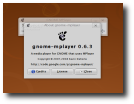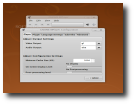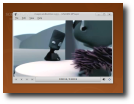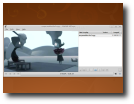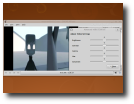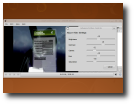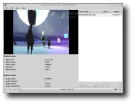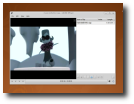One of the most popular ways of relaxing in the modern world is probably watching a movie we like. As multimedia content is everywhere around us, especially on the Internet, you probably want to see a movie on your computer without keeping a web browser open or something else that might not do the job of a media player well. If you are also looking for a lightweight media player that just does its job and nothing more, you should try GNOME Mplayer.
GNOME Mplayer is a really simple media player (actually, a front-end for Mplayer), based on the mplayerplug-in source code. Its developer created it for testing purposes also, using it as a test bed for new methods of operation for mplayerplug-in. GNOME Mplayer can be set as default player for RTSP and MMS protocols in Firefox by adding the following two strings with their respective values in about:config:
network.protocol-handler.app.rtsp with the value /usr/bin/gnome-mplayer
When you first launch the app, you will go something like "where are the buttons?! Is this the application?" as GNOME Mplayer looks pretty minimal, with the main toolbar, four navigational buttons (previous, play, stop and next), a progress bar, the volume and an inactive "fullscreen" button. If you want to make it "minimal", you can hide these controls by pressing "C" or going to View -> Controls.
The next thing you'll probably do is open up a movie file. Besides playing movies, you can also watch online streams, programs from analog or digital TVs or DVD discs. The interface will modify every time you do something, like opening up a playlist or showing the information related to the currently playing file/stream/etc. and all the action will take place in the same window. This is a really nice feature, as it saves space on your desktop and offers better usability. Comparing GNOME Mplayer to VLC for example, I could say that the first one does all the things VLC does, and it can perform much better than VLC thanks to its single-windowed interface. I think there's a feature that's missing from GNOME Mplayer, and that is the "Recently Opened..." menu which would allow the user to play the movies he/she has recently viewed.
The movies I played ran smoothly, the only thing disappointing is the fact that the progress bar doesn't show the progress accurately and you can't navigate through the movie by dragging it. The brightness, contrast, hue, saturation and gamma can be corrected from the "Advanced Video Controls" option, located at View -> Advanced Options. If you go to the "Preferences Menu", in the "Language Settings" tab, you can choose the default audio and subtitle language. There are a large number of supported languages; there are probably hundreds of them!
In fullscreen mode, GNOME Mplayer will wait a few seconds and afterwards it will hide the buttons from the screen, allowing you to enjoy the film without any interference from the application. The OSD can be started with a scrollbar (On Screen Display Level) from the Preferences -> Player menu. The scrollbar has a few positions that allow the user to set how long the OSD will stay on screen, from "No Display" to "Timer/Total".
There is the same issue that seems to be on most of Linux applications: the developer considers everyone knows what all the options are, and what they do. For example, would a normal user know what happens when the verbose debug mode is enabled? Or what's the difference between gl, x11 and xv video outputs? I don't really think so! I hope that this will change as this application looks very promising and acts fine, at least from a normal user point of view.
The Good
GNOME Mplayer is very small, from few points of view. It doesn't take too much space on your hard disk, or on your desktop, allowing you to multi task easily.
The Bad
It includes some functions that a normal user might not understand, and they are not explained. I think GNOME Mplayer would be much better with a few tool tips to tell the user what a specific feature does.
The Truth
It is mostly used as a test bed for future features of the mplayerplug-in, so you should expect things to change very fast from a version to another or even appear/disappear.
Here are some screenshots with GNOME Mplayer in action:
 14 DAY TRIAL //
14 DAY TRIAL // 